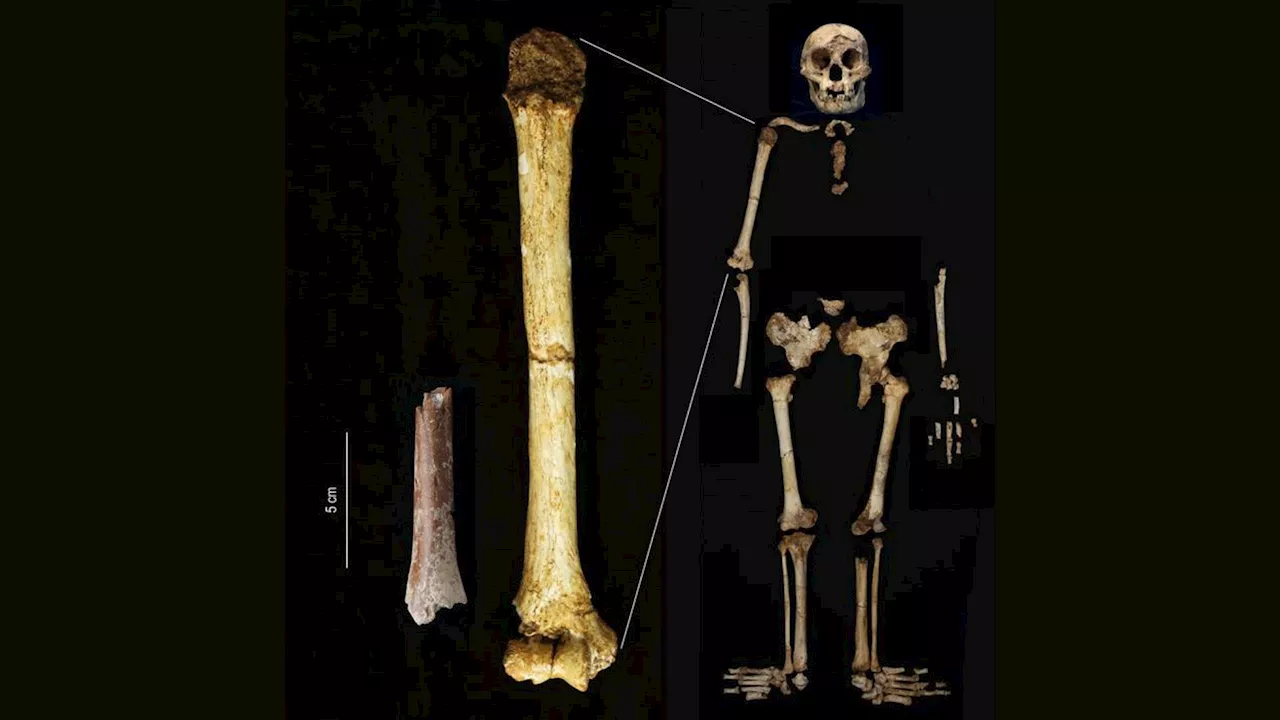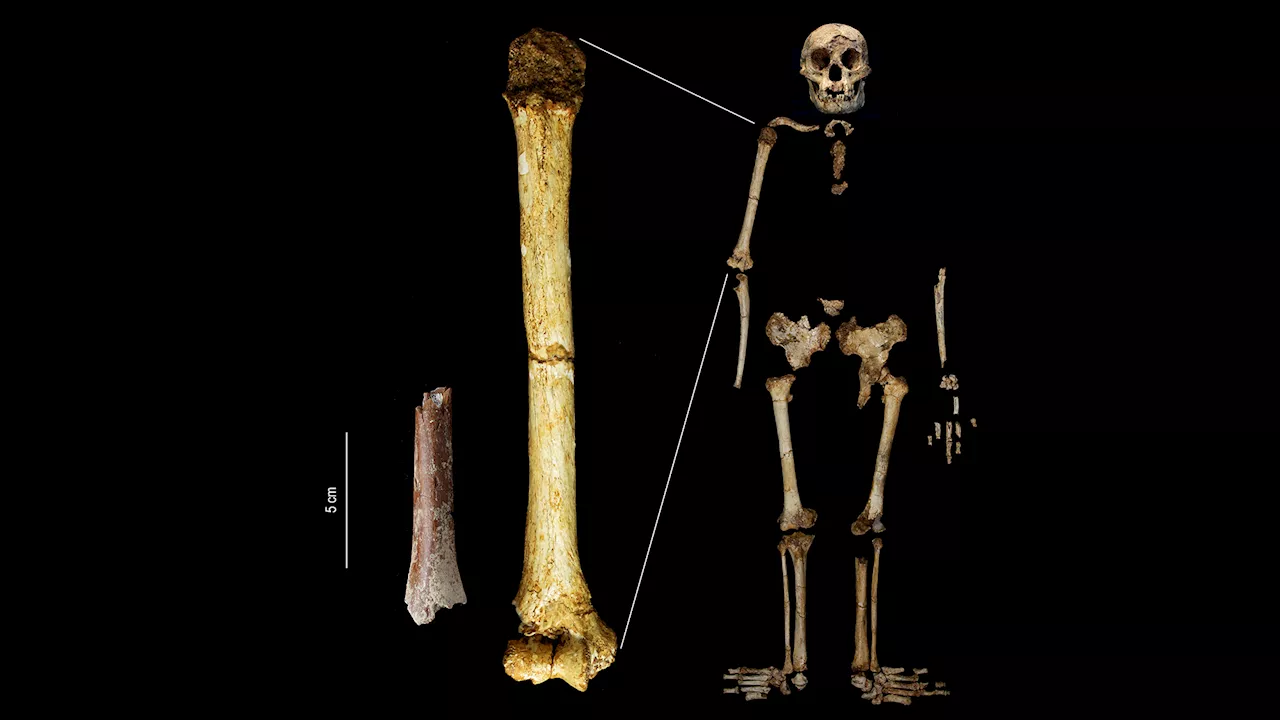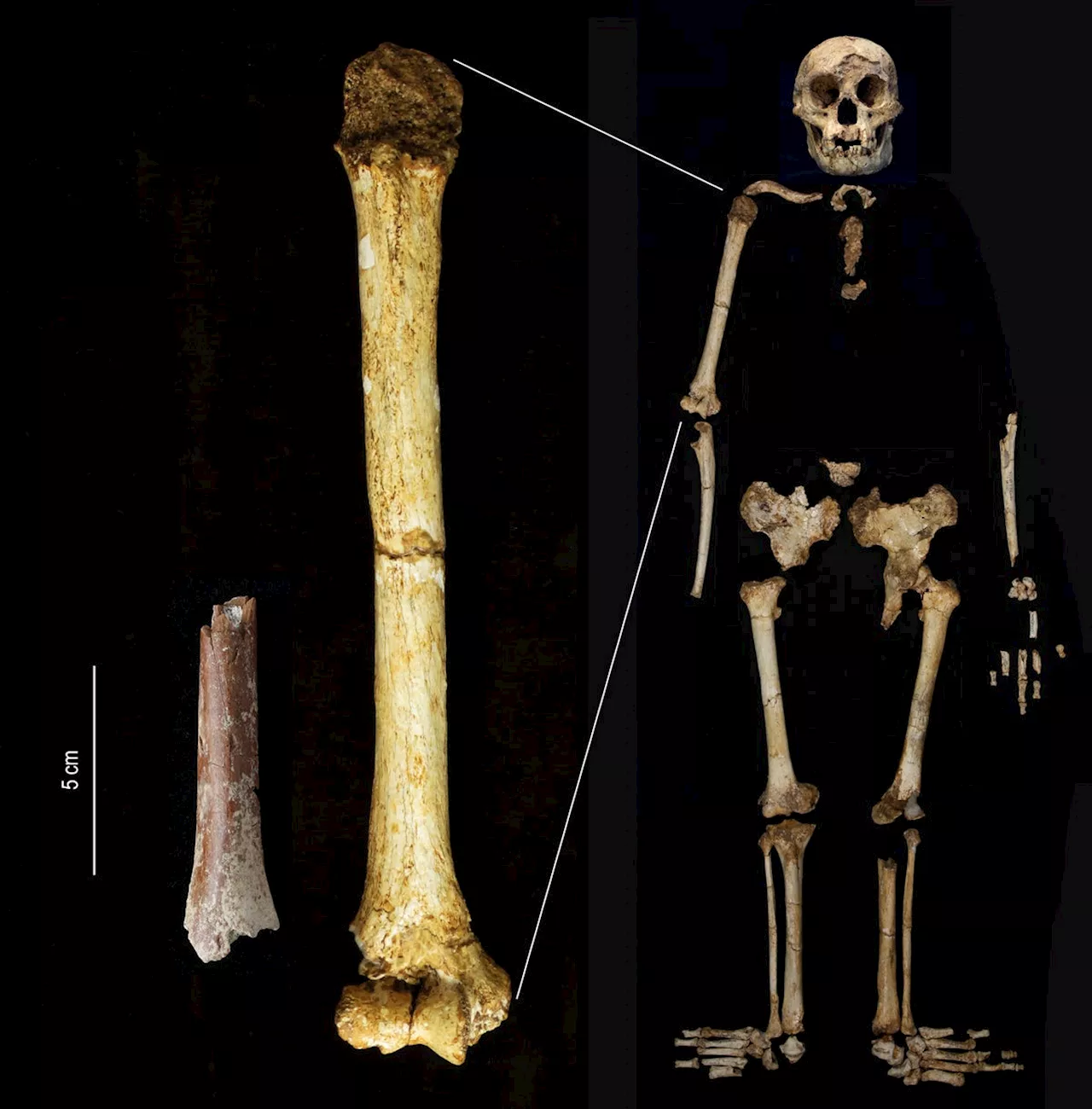A tiny human relative called the Hobbit, or Homo floresiensis, may have evolved from a larger ancestor that shrunk upon arriving on the Indonesian island of Flores, a new fossil suggests
may have evolved from a larger ancestor that shrunk upon arriving on the Indonesian island of Flores, a new fossil suggestsThe humerus fragment discovered at Mata Menge on the Indonesian island of Flores is shown at the same scale as thean oddball member of the human family that lived as recently as 60,000 years ago on the Indonesian island of Flores, is coming into focus. With its miniature body and brain and relatively big feet,came to be known as the hobbit.
This female skeleton, dubbed LB1, is a “type specimen,” or representative of the species. From LB1, scientists estimate the individual stood about three feet, six inches tall, with a grapefruit-size brain and feet that were more than half the length of their thighbones. Along with bones from other individuals found in the cave, dating to between about 100,000 and 60,000 years ago, LB1 showed that the hobbit skull had characteristics more like our close human relative.
For years, debate has centered around the origin of this population. Researchers have argued about whether it arose from an already small, primitive early human, such asthat shrunk under the pressures of island life. A third argument that was taken off the evolutionary table was that these were modern humans with a condition that caused dwarfism., about 70 kilometers from the Liang Bua site on Flores.
“Having postcranial bones is important to infer things like body size because this is not easy to infer from teeth of cranial bones,” says Aida Gómez-Robles, an anthropologist at University College London, who wasn’t involved in the new study. “But at the same time, what have found is a fragment of a humerus that doesn’t have the ends.”
The hope is that more complete postcranial bones dating back even further in time, closer to the hypothetical emergence of
United Kingdom Latest News, United Kingdom Headlines
Similar News:You can also read news stories similar to this one that we have collected from other news sources.
 700,000-year-old fossil sheds light on mysterious ‘Hobbit’ hominin speciesScientist says a 700,000-year-old fossil of ancient hominins is the ‘smallest upper arm bone known from the hominin fossil record worldwide.’
700,000-year-old fossil sheds light on mysterious ‘Hobbit’ hominin speciesScientist says a 700,000-year-old fossil of ancient hominins is the ‘smallest upper arm bone known from the hominin fossil record worldwide.’
Read more »
 New ‘Hobbit’ fossils discovered on Indonesia’s Flores islandLaura is a science news writer, covering a wide variety of subjects, but she is particularly fascinated by all things aquatic, paleontology, nanotechnology, and exploring how science influences daily life. Laura is a proud former resident of the New Jersey shore, a competitive swimmer, and a fierce defender of the Oxford comma.
New ‘Hobbit’ fossils discovered on Indonesia’s Flores islandLaura is a science news writer, covering a wide variety of subjects, but she is particularly fascinated by all things aquatic, paleontology, nanotechnology, and exploring how science influences daily life. Laura is a proud former resident of the New Jersey shore, a competitive swimmer, and a fierce defender of the Oxford comma.
Read more »
 Ancient Fossil Discovery in South Africa’s Cradle of Humankind Offers New Insights Into Human OriginsScience, Space and Technology News 2024
Ancient Fossil Discovery in South Africa’s Cradle of Humankind Offers New Insights Into Human OriginsScience, Space and Technology News 2024
Read more »
 2 New Yellowstone Shows In Development As Report Clarifies Sequel & Spinoff ConfusionThe Dutton kids will still return.
2 New Yellowstone Shows In Development As Report Clarifies Sequel & Spinoff ConfusionThe Dutton kids will still return.
Read more »
 UK’s most complete dinosaur fossil in a century reveals new speciesA previously unknown species of plant-eating dinosaur roamed on an island off the south coast of England around 125 million years ago, new research has found.
UK’s most complete dinosaur fossil in a century reveals new speciesA previously unknown species of plant-eating dinosaur roamed on an island off the south coast of England around 125 million years ago, new research has found.
Read more »
 99-million-years-old fossil reveals new dinosaur species that lived in burrowsThe well-preserved fossil along with anatomical features suggests that these dinosaurs likely spent part of their lives in underground burrows.
99-million-years-old fossil reveals new dinosaur species that lived in burrowsThe well-preserved fossil along with anatomical features suggests that these dinosaurs likely spent part of their lives in underground burrows.
Read more »
